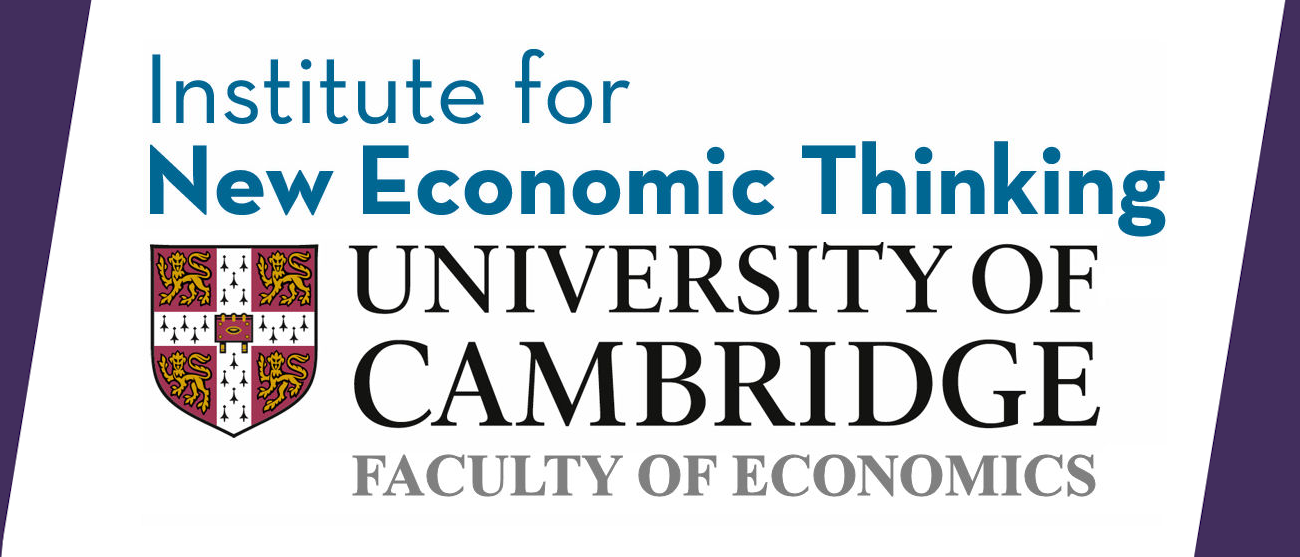Over the past three months, there has been a rapid increase in government spending. The United States has implemented the largest fiscal stimulus package in history through the CARES Act, which raises spending by 10 percent of national income and includes transfers of 1,200 dollars to the majority of Americans. The United Kingdom has subsidized the wages of furloughed employees and has implemented various other measures to support firms, including grants for small businesses. What is the effect of these measures on economic growth?
Although every form of fiscal spending has different economic effects, a large body of research has analysed the average effect of government spending on economic growth. The aim is to measure the fiscal multiplier: the average percentage increase in national income when government spending rises by one percent of national income. Of particular interest is whether the multiplier is above or below 1. If the multiplier exceeds 1, private spending increase when governments increase spending. Fiscal expansion is almost a free lunch: national income grows faster than government expenditures, such that expansionary policy reduces the fiscal deficit as a percentage of GDP. Conversely, a multiplier below 1 means government expenditure crowds-out private expenditure, for instance because it raises inflation or requires an increase in taxes.
Before the 2008-2009 Financial Crisis, the consensus was that the multiplier averaged around 0.5. That was the estimate used, for example, in forecasts by the IMF (Blanchard and Leigh 2013). Because austerity during the Great Recession had particularly adverse effects on growth, the level of the multiplier has since been reassessed in a large number of studies. The results from these studies offer a welcome message during the coronavirus pandemic: under the current circumstances, the fiscal multiplier is higher than average and is likely to exceed 1.
Recent estimates
A large fraction of the recent research into multipliers relies on variation in government spending at the regional level, driven by changes in policy at the national level. Nakamura and Steinsson (2014), for example, measure the effect of changes in defence spending at the national level on state-level economic growth in the United States. Because changes in federal defence spending are driven by strategic foreign policy considerations rather than by regional economic conditions, their approach allows the multiplier of fiscal spending at the regional level to be causally estimated. A causal estimation is needed because government expenditures often increase in response to poor economic conditions, causing a negative correlation between spending and growth. Nakamura and Steinsson find an average multiplier of 1.5: an increase in defence spending creates one and a half as much local economic growth.
Estimates of the fiscal multiplier based on regional variation are frequently high. Cambridge Professor Giancarlo Corsetti finds a multiplier of 1.6 based on regional expenditure cuts in Italy following the expulsion of mafia-infiltrated city council members (Acconcia, Corsetti and Simonelli 2014). In a meta-analysis based on twenty studies that use similar regional variation, Chodorow-Reich (2019) finds that estimates of the multiplier using regional data range from 1 to 2.5, with an average of 1.8 and a median of 1.9. That means that an increase in fiscal spending at the regional level has a positive effect on private expenditure and is an effective tool to stimulate growth.
The regional estimates do not always apply at the national level. If an increase in regional spending is financed by higher taxation at the national level, for example, the regional multiplier will overstate the national multiplier. Similarly, if central banks respond to higher spending at the national level by raising the interest rate, this too suppresses the effect of national spending on growth.
If spending is debt-financed, however, the difference between regional-level and national-level multipliers is small. Chodorow-Reich (2019) derives that, even if consumers rationally anticipate future taxation, the regional multiplier overstates the national multiplier by at most 0.07. Because some increases in private spending will occur outside of the region that faced an increase in government spending, regional multipliers may even underestimate the total effect of spending on growth. Chodorow-Reich concludes that the estimated regional multipliers are therefore a lower bound for multipliers at the national level, as long as government spending is debt-financed and monetary policy does not respond by raising interest rates.
Now is the time for stimulus spending
The rise in spending during the coronavirus pandemic meets both requirements: the expenditure is debt-financed, and central banks have taken extraordinary measures to accommodate economic activity rather than to restrict it. That means that the regional multiplier estimates of 1 to 2.5 apply.
Besides this high baseline estimate of the multiplier, new research suggests that the timing of the current increase in spending is particularly favourable. Berge, De Ridder and Pfajfar (2020) show that the multiplier is higher when unemployment increases, compared to when unemployment decreases.
Previous research has analysed whether multipliers depend on the economy’s cyclical stance, but did not reach a consensus. Auerbach and Gorodnichenko (2012) estimate that multipliers are 2.2 at the national level during recessions and 0.6 during expansions. Ramey and Zubairy (2019), to the contrary, find no significant difference between multipliers in expansions and recessions using defence spending between 1889 and 2015. They furthermore estimate that multipliers are always below 1. The difference in these results is driven by how recession and expansions are defined. Auerbach and Gorodnichenko define recessions as episodes where unemployment increases, and growth decreases. Ramey and Zubairy define recessions as episodes where the level of unemployment is high.
In Berge, De Ridder and Pfajfar (2020) we show that that the multiplier is consistently higher when unemployment is increasing, also using Ramey and Zubairy’s data. An increase in government spending is, therefore, most effective at the start of a recession, even if unemployment is still low or output is above potential.
Multipliers during the pandemic
Based on research over the past ten years, it is clear that multipliers are highest when spending is debt-financed, monetary policy is accommodative and unemployment is rising. That strongly supports the recent increases in government spending. The particular type of recent spending might also have a large multiplier on itself because it stimulates spending by consumers with a low income. That is the case, for example, with the American CARES—cheques and the UK’s support for furloughed employees. Evidence on the multiplier of such transfers is found, for example, in De Ridder, Hannon and Pfajfar (2020). We show that transfers to students from low-income families in the United States have a relatively high multiplier (2.4). This is because recipients spend most of their transfers.
In summary, the existing evidence suggests that the recent increases in spending will be effective. That is, of course, subject to the caveat that today’s circumstances are unique, and only future research can analyse the actual effect of current measures on growth. As a consequence of social distancing, a considerable fraction of services cannot be consumed, regardless of increases in fiscal spending. That may limit the ability of fiscal spending to raise private consumption while a lockdown is in place. It seems likely, however, that future consumer spending will increase as a consequence of the current measures. That will stimulate recovery as lockdowns are gradually eased across Europe.
For the working paper showing multipliers are higher when unemployment is increasing, see:
https://www.inet.econ.cam.ac.uk/research-papers/wp-abstracts?wp=2024
This feature is based on the following publication (Dutch):
https://esb.nu/esb/20059804/tijdens-de-coronacrisis-hebben-overheidsuitgaven-veel-effect-op-het-bb
References
Accondia, A; Corsetti, G, Simonelli, S (2014), “Mafia and Public Spending: Evidence on the Fiscal Multiplier from a Quasi-Experiment”, American Economic Review 104(7), July 2014
Auerbach, A and Gorodnichenko, Y (2012), “Measuring the Output Responses to Fiscal Policy”, American Economic Journal: Economic Policy. 4(2), May 2012
Berge, T; De Ridder, M; Pfajfar, D (2020) “When is the Fiscal Multiplier High? A Comparison of Four Business Cycle Phases”, Federal Reserve FEDS Working Paper, March 2020.
Blanchard, O and Leigh, D (2013), “Growth Forecast Errors and Fiscal Multipliers”, IMF Working Paper, January 2013
Chodorow-Reich, G (2019) “Geographical Cross-Sectional Fiscal Spending Multipliers: What Have We Learned?” American Economic Journal: Economic Policy, 11(2), May 2019
De Ridder, M; Hannon, S; Pfajfar, D (2020) “The Multiplier of Education Expenditures”, Working Paper, May 2020
Nakamura, E and Steinsson, J (2014) “Fiscal Stimulus in a Monetary Union: Evidence from US Regions”. American Economic Review, 104(3), March 2014
Ramey, V and Zubairy ,S (2018), “Government Spending Multipliers in Good Times and in Bad: Evidence from US Historical Data”, Journal of Political Economy, 126(2), April 2018

About the author
Maarten De Ridder is a PhD candidate at the Faculty of Economics, University of Cambridge. He works on macroeconomics, productivity and firm dynamics. In September he will join the LSE as an Assistant Professor.








